The internet network is termed to be the frontier that depends on programming languages and codes to discover and share information and data. One of the most essential instruments of the web is the Domain Name System. (However, most people think that “DNS” means “Domain Name Server,” whereas, it truly means “Area Name System.”) DNS infrastructure is a protocol inside the arrangement of gauges for how computers trade information on the web and numerous private systems, known as the TCP/IP protocol suite. It is quite essential, as it tends to convert domain names of websites like “TEMOK.com” into an Internet Protocol (IP) address, for example, 192.42.251.42 that PCs use to distinguish each other across the network. In simple words, it is an arrangement of coordinating names with numbers.
PCs and other system gadgets on the web utilize an IP address to route end-user requests toward the website they might be attempting to reach. This is like dialing a telephone number to interface with the individual you’re attempting to call. Because of this, you don’t need to keep your location book of IP addresses. Rather, you simply interface using a domain name server additionally called a DNS server or name server, which deals with a gigantic database that maps these names to IP addresses.
Regardless of whether you’re getting to a site or sending an email, your PC utilizes this server to look into that specific domain name you’re attempting to get to. The correct term for this procedure is domain name resolution, and you would state that the DNS server settles the name to the IP address. For instance, when you enter “www.temok.com” in your program, some portion of the system association incorporates settling that specific name “Temomk.com” into an IP address, 195.42.251.42, for Temok’s web servers.
Up until now, you’ve found out about some significant DNS essentials. The remainder of this article jumps further into IP addresses and domain name servers. It even incorporates a prologue to dealing with your secure DNS server. We should begin by taking a gander at how IP addresses are organized and how that is critical to the domain name procedures.
Table of Contents
DNS Servers and IP Addresses
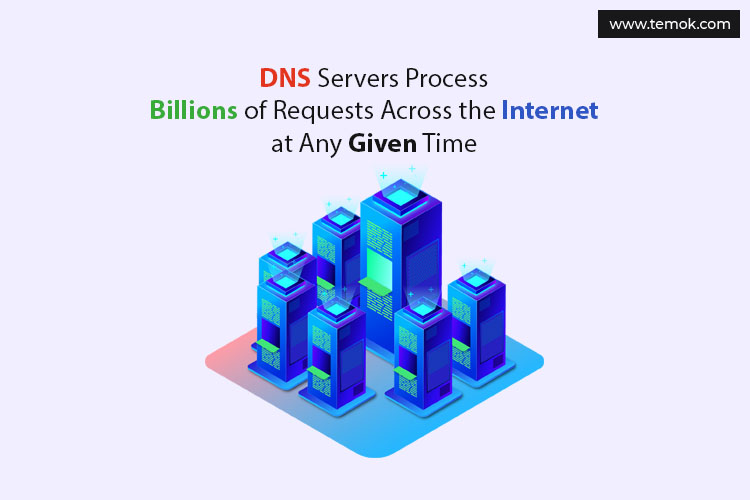
You recently discovered that the primary function of a DNS server is to determine (interpret) a domain name into an IP address. That seems like a basic errand, and it would be, aside from the accompanying focuses:
There are billions of IPs presently being used, and most PCs have a comprehensible name too.
It (in total) is preparing billions of user requests over the web at some random time.
Millions of individuals are changing and availing domain names and IPs every day.
With such a great amount to deal with, dynamic DNS servers depend on internet protocol and network efficiency. Some portion of the IP’s adequacy is that each machine on a system has a one-of-a-kind IP address in both the IPV4 and IPV6 versions being monitored by the Internet Assigned Numbers Authority (IANA).
You might have thought about where IPs originated from. In case we’re discussing your PC or laptop then you must know that it likely originates from a Dynamic Host Configuration Protocol (DHCP) server on your system. The core purpose of a DHCP server is to ensure that the user’s PC has the IP address and other system setups it needs at whatever point they’re on the web. Since this is termed to be “dynamic,” the IP address for your PC will most likely change every once in a while, for example, when you shut down your PC for a couple of days. As the client, you’ll most likely never notice such a lot of occurring.
Web servers and different PCs that need a steady point of contact utilize static IPs. This implies a similar IP address is constantly allocated to that framework’s interface when it’s on the web. To ensure that the interface consistently gets a similar IP address, the IP connects the location with the Media Access Control (MAC) address for that system interface. Each system interface, both remote and wired, has a special MAC address implanted in it by the maker.
There Are 4 Servers Involved in Loading a Webpage:
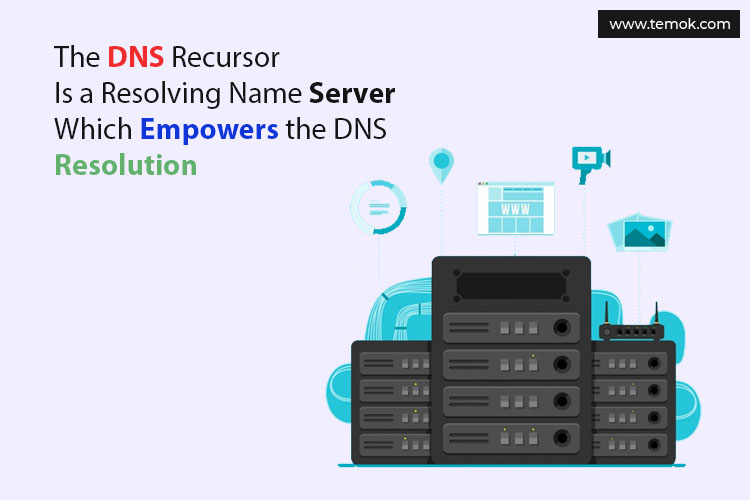
- Recursor
The precursor can be thought of as a bookkeeper who is approached to get a specific place in a library. The precursor is a server intended to get inquiries from customer machines through apps, for example, internet browsers. Ordinarily, the precursor is then answerable for causing extra demands to fulfill the customer’s inquiry.
- Root Nameserver
The root server is the initial phase in decoding (settling) intelligible hostnames into IP addresses. It very well may be thought of like a list in a library that focuses on various book racks – commonly it fills in as a kind of perspective to other increasingly explicit areas.
- TLD Nameserver
The top-level area server (TLD) can be thought of as a particular book rack in a library. This nameserver is the following stage in the quest for a particular IP address, and it has the last segment of a hostname (For example, the TLD server is “com”).
- Authoritative Nameserver
This last nameserver can be thought of as a lexicon on a rack of books, wherein a particular name can be converted into its definition. The legitimate nameserver is the last stop in the nameserver question. If the name server approaches the mentioned record, it will restore the IP address for the mentioned hostname to the DNS Recursor (the administrator) that made the underlying user request.
Difference Between Authoritative DNS Server & Recursive DNS Resolver
Both these concepts relate to the servers and server groups that are fundamental to the domain name server’s foundation, however, each plays out an alternate job and relates to various areas inside the pipeline of a DNS query. One approach to consider the thing that matters is the recursive resolver is toward the start of the DNS query and the authoritative nameserver is toward the end.
Recursive DNS Resolver
The recursive resolver is the PC that reacts to a recursive user request from a customer and sets aside the effort to find the DNS record. It does this by making a progression of requests until it comes to the authoritative DNS nameserver for the mentioned record (or times out or restores a mistake if no record is found). Fortunately, recursive DNS resolvers don’t generally need to make numerous requests to find the records expected to react to a customer; caching is an information ingenuity process that helps hamper fundamental demands by serving the mentioned asset record before in the query.
Authoritative Server
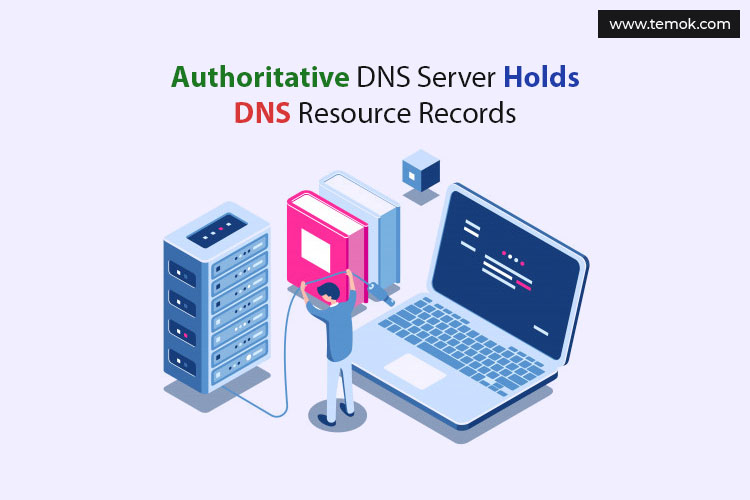
In simple terms, an authoritative server is a server that holds and is answerable for, asset records. This is the server at the base of the DNS lookup chain that will react with the questioned asset record, at last permitting the internet browser to make the user request to arrive at the IP address expected to get to a site or other web assets. An authoritative nameserver lookup can fulfill inquiries from its very own information without expecting to question another source, as it is the last wellspring of truth for certain DNS records.
What Are the Steps in a DNS Lookup?
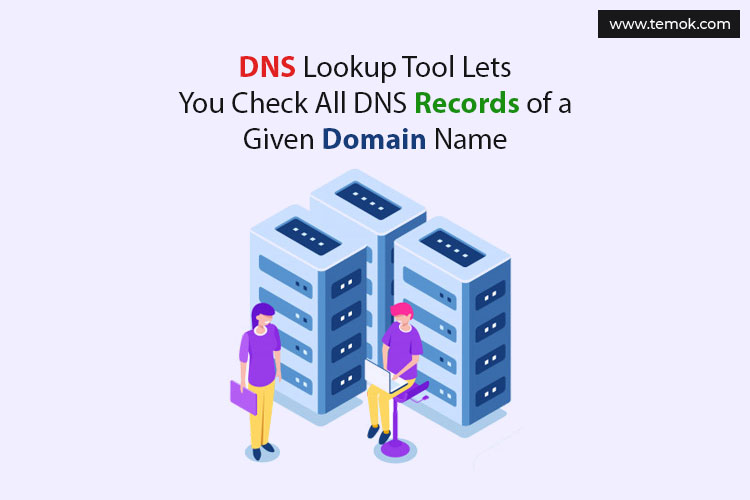
For most circumstances, it is quite concerned about a space name being converted into a suitable IP address. To figure out how this procedure functions, it follows the way of a query as it goes from an internet browser, through the query process, and back once more. How about we take a gander at the strides?
Note: Often query data will be reserved either locally inside the questioning PC or remotely in the framework. There are regularly 8 stages in a query. When DNS data is stored, steps are skipped from the query process which makes it snappier. The model underneath diagrams each of the 8 stages when nothing is reserved.
8 Stages in a Query
- A client types ‘example.com’ into an internet browser and the question goes into the Internet and is gotten by a recursive resolver.
- The resolver then questions a root nameserver (.).
- The root server at that point reacts to the resolver with the location of a Top-Level Domain (TLD), (for example, .com or .net), which stores the data for its areas. While scanning for example.com, our solicitation is highlighted in the .com TLD.
- The resolver then makes a solicitation to the .com TLD.
- The TLD server at that point reacts with the IP address of the area’s nameserver, example.com.
- Lastly, the recursive resolver sends an inquiry to the area’s nameserver.
- The IP address for example,.com then comes back to the resolver from the nameserver.
- The resolver then reacts to the internet browser with the IP address of the area mentioned at first.
When the 8 stages of the query have restored the IP address for example.com, the program can ask for the page:
- The program makes an HTTP request to the IP address.
- The server at that IP restores the page to be rendered in the program (stage 10).
What is a DNS Resolver?
The DNS resolver is the main stop in the DNS query, and it is answerable for managing the customer that made the underlying requests across the web. The resolver begins the succession of questions that at last prompts a URL being converted into the vital IP address.
Note: A regular uncached query will include both recursive and iterative questions.
It’s imperative to separate between a recursive inquiry and a recursive resolver. The inquiry alludes to the solicitation made to a DNS resolver requiring the goals of the question. A recursive resolver is the PC that acknowledges a recursive question and procedures the reaction by making the fundamental solicitations.
Types of DNS Queries
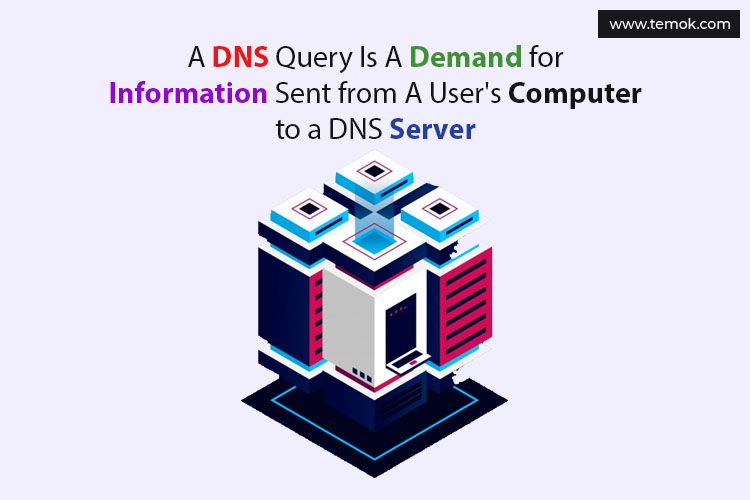
In DNS lookups three sorts of queries happen. By utilizing a mix of these inquiries, an advanced procedure for DNS goals can bring about a decrease in separation voyages. In a perfect circumstance stored record information will be accessible, permitting a name server to restore a non-recursive question.
3 Sorts of DNS Inquiries
1. Recursive inquiry – In a recursive question, a customer necessitates that a server (commonly a recursive resolver) will react to the customer with either the mentioned asset record or a mistake message if the resolver can’t discover the record.
2. Iterative inquiry – in this circumstance, the customer will enable a server to restore the best answer it can. On the off chance that the questioned server doesn’t have a counterpart for the inquiry name, it will restore a referral to a DNS server definitively for a lower level of the space namespace. The customer will at that point inquire about the referral address. This procedure proceeds with extra DNS servers down the inquiry chain until either a mistake or break happens.
3. Non-recursive inquiry – ordinarily this will happen when a resolver customer inquires a DNS server for a record that it approaches either because it’s legitimate for the record or the record exists within its reserve. Commonly, a DNS server will check DNS records to forestall extra data transfer capacity utilization and burden on upstream servers.
What is DNS Caching? Where Does DNS Caching Occur?
The reason behind caching is to briefly put away information in an area that outcomes in enhancements in execution and unwavering quality for information demands. Reserving includes putting away information closer to the mentioned customer with the goal that the DNS question can be settled before and extra inquiries further down the DNS query chain can be maintained a strategic distance from, subsequently improving burden times and decreasing data transmission/CPU utilization. Information can be reserved in an assortment of areas, every one of which will store records for a set measure of time controlled by an opportunity to live (TTL).
Browser DNS Caching
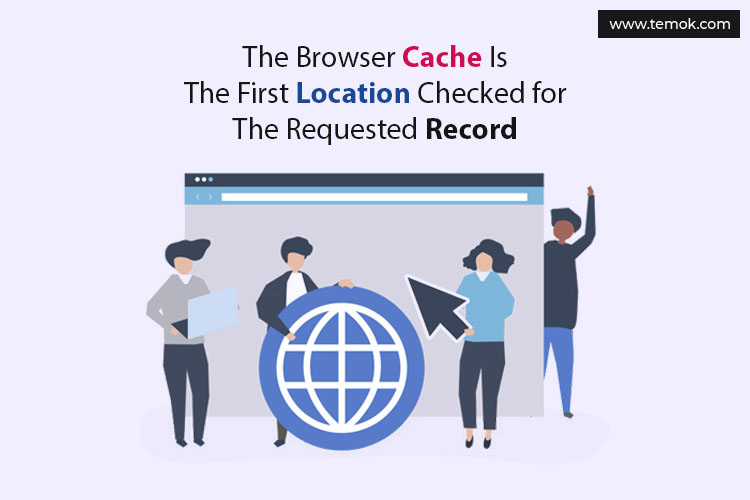
Present-day internet browsers are deployed to reserve DNS records for a set measure of time. the reason here is self-evident; the closer the DNS storing jumps out at the internet browser, the less handling advances must be taken to check the reserve and make the right demands to an IP address. At the point when a solicitation is made for a DNS record, the program reserve is the principal area checked for the mentioned record.
Operating System (OS) Level Caching
The working framework-level DNS checker is the second and last nearby stop before a DNS inquiry leaves your machine. The procedure inside your working framework that is intended to deal with this question is regularly called a “stub resolver” or DNS customer. At the point when a stub resolver gets a request from an application, it first checks its very own reserve to check whether it has the record. If it doesn’t, it at that point sends a DNS question (with a recursive banner set), outside the nearby system to a DNS recursive resolver inside the Internet specialist co-op (ISP).
When the recursive resolver inside the ISP gets a DNS inquiry, similar to every single past advance, it will likewise verify whether the mentioned host-to-IP-address interpretation is as of now put away inside its neighborhood tirelessness layer. The recursive resolver likewise has extra usefulness relying upon the kinds of records it has in its reserve:
- If a resolver does not have A records, however, has the NS records for the definitive nameservers, it will question those name servers legitimately, bypassing a few stages in the DNS inquiry. This easy route keeps queries from the root and .com nameservers (as we continued looking for example.com) and enables the goals of the DNS to happen all the more rapidly.
- If the resolver doesn’t have the NS records, it will send a question to the TLD servers (.com for our situation), skirting the root server.
- In the far-fetched occasion that the resolver doesn’t have records highlighting the TLD servers, it will at that point inquire about the root servers. This occasion ordinarily happens after a DNS store has been cleansed.
How DNS Adds Efficiency?
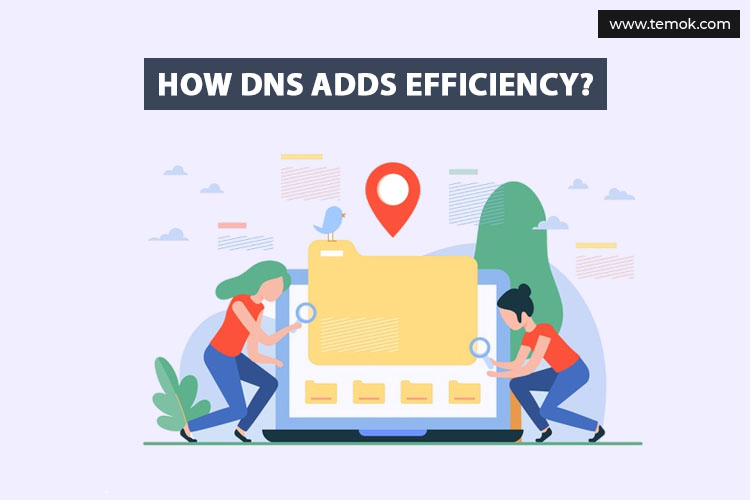
A domain name server is composed of a pecking order that helps keep things running rapidly and easily. To delineate, how about we imagine that you needed to visit temok.com. The underlying user request for the IP address is made to a recursive resolver, a server that is typically worked by an ISP or another outsider supplier. The recursive resolver knows which different domain name servers it needs to solicit to determine the name from a site (temok.com) with its IP address. This hunt prompts a root server, which knows all the data about top-level areas, for example, .com, .net, .org, and country domains like .cn (China) and .uk (United Kingdom). Root servers are found all around the globe, so the framework generally guides you to the nearest one geologically.
When the user request arrives at the right root server, it goes to a top-level area (TLD) name server, which stores the data for the second-level space, the words utilized before you get to the .com, .organization, .net (for instance, that data for networkworld.com is “temok.com”). The solicitation at that point goes to the Domain Name Server, which holds the data about the site and its IP address. When the IP address is found, it is sent back to the customer, who will now be able to utilize it to visit the site. The entirety of this takes simple milliseconds.
Since DNS has been working for the past 30+ years, a great many people underestimate it. Security additionally wasn’t viewed when constructing the framework, so programmers have exploited this, making an assortment of assaults.
DNS Reflection Attacks
The DNS reflection assaults can overwhelm people with high-volume messages from resolver servers. Hackers demand huge DNS records from all the open DNS resolvers they can discover and do so utilizing the mock IP address of the person in question. At the point when the resolvers react, the injured individual gets a surge of unrequested information that overpowers their machines.
DNS Cache Poisoning

Hackers figure out how to embed false location records into the DNS so that when a potentially injured individual demands a location for one of the harmed locales, the DNS reacts with the IP address for an alternate site, one constrained by the assailant. Once in these fake locales, unfortunate casualties might be fooled into surrendering passwords or enduring malware downloads.
DNS Resource Exhaustion
DNS asset exhaustion assaults can stop the DNS framework of ISPs, hindering the ISP’s clients from arriving at destinations on the web. This should be possible by assailants enrolling a domain name and utilizing the injured individual’s name server as the space’s definitive server. So, if a recursive resolver can’t supply the IP address related to the site name, it will solicit the name server from the person in question. Assailants produce huge quantities of requests for their space and hurl them in non-existent subdomains for sure, which prompts a deluge of goal demands being terminated at the injured individual’s name server, overriding it.
DNS is Constantly Evolving
You have learned a lot about domain name servers, how DNS maps domains to IP locations, and how to pick your domain name and arrange it to work inside the dispersed arrangement of DNS servers around the globe. Moreover, you’re in the zone with zone records and enrolled for progress with space name servers.
You ought to comprehend that DNS infrastructure is certifiably not a static idea. In late 2018, ICANN at long last turned out new security highlights for DNS. So, those progressions influenced the cryptographic keys utilized in the Domain Name System Security Extensions DNS protocol, referred to by geeks as the root zone key marking key (KSK). The security enhancements were essential due to how systems are quickly changing and extending, to a limited extent because of the Internet of Things, which brings a great many new interconnected gadgets into the web’s overlay.

Anil Kumar
Thank you for sharing about detailing of DNS Infrastructure.
Hammad Mohsin
The Domain Name System DNS is the phonebook of the internet. Humans access information online through domain names, like nytimes.com or espn.com. Web browsers interact through internet protocol IP addresses. DNS translates the domain name to IP addresses so browsers can load Internet resources.